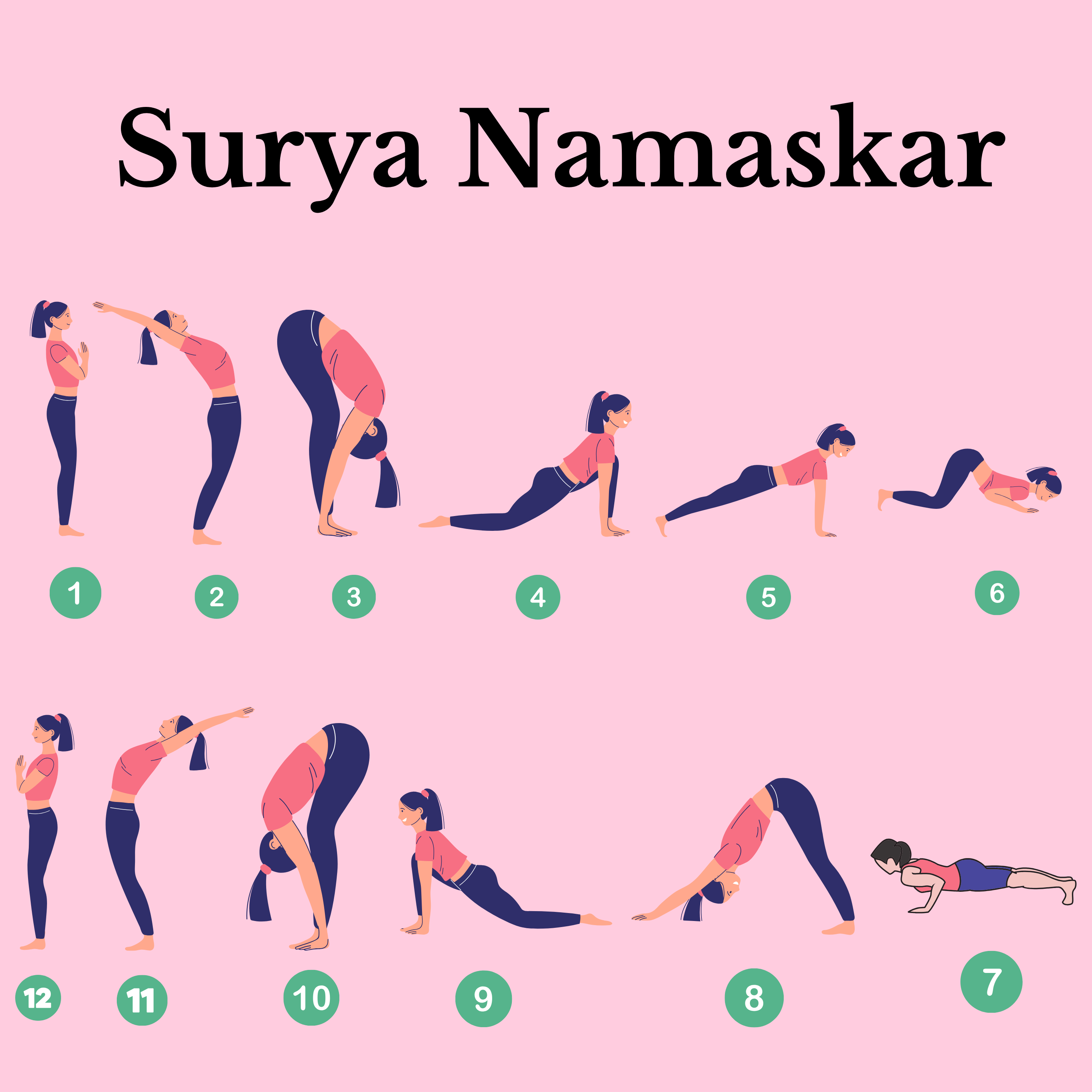Title: Surya Namaskar: Unlock the Power of Sun Salutations for Health & Wellness (2025 Guide)
Discover the health and wellness benefits of Surya Namaskar (Sun Salutations). Learn step-by-step practice, daily routine, and recommended supplements to enhance your yoga journey.
Introduction
Surya Namaskar (Sun Salutations) is a timeless yoga sequence that combines physical postures, breathing techniques, and mindfulness to enhance overall health and wellness. Practicing Surya Namaskar daily helps increase flexibility, strengthen muscles, improve circulation, and boost mental clarity.
In 2025, this ancient practice continues to be one of the most effective ways to maintain fitness, vitality, and inner balance.
👉 Related Reading: Mayur Asana – Unlock Strength & Flexibility with Yoga
🌟 What is Surya Namaskar?
-
Meaning: “Surya” means Sun, and “Namaskar” means Salutation.
-
A sequence of 12 yoga poses performed in a flow.
-
Combines movement, breath, and meditation to harmonize body and mind.
🪷 Step-by-Step Guide: How to Perform Surya Namaskar
-
Pranamasana (Prayer Pose): Stand straight, palms together at chest.
-
Hastauttanasana (Raised Arms Pose): Stretch arms upward and slightly backward.
-
Padahastasana (Hand to Foot Pose): Bend forward, touch your feet, head towards knees.
-
Ashwa Sanchalanasana (Equestrian Pose): Step one leg back, knee on floor, chest forward.
-
Dandasana (Stick Pose): Step back to plank position, hold core tight.
-
Ashtanga Namaskar (Salute with Eight Limbs): Lower knees, chest, and chin to floor.
-
Bhujangasana (Cobra Pose): Lift chest, stretch back, elbows close to body.
-
Adho Mukha Svanasana (Downward Dog Pose): Lift hips, form an inverted V.
-
Ashwa Sanchalanasana (Opposite Leg Step Back): Repeat Equestrian Pose on other side.
-
Padahastasana (Hand to Foot Pose): Fold forward, hands to feet.
-
Hastauttanasana (Raised Arms Pose): Stretch arms up and back.
-
Pranamasana (Prayer Pose): Return to standing, palms together.
Tip: Start with 3–5 rounds, gradually increase to 12 rounds for full benefits.
🌟 10 Benefits of Surya Namaskar
-
Boosts Cardiovascular Health – Flow sequence improves heart function.
-
Increases Flexibility – Stretches muscles, spine, and joints.
-
Strengthens Core & Muscles – Tones abdomen, arms, and legs.
-
Enhances Mental Clarity – Combines mindful breathing with movement.
-
Supports Weight Management – Burns calories, increases metabolism.
-
Improves Digestion – Gentle compression of abdomen enhances digestive organs.
-
Reduces Stress & Anxiety – Mindful flow calms nervous system.
-
Detoxifies Body – Stimulates circulation and lymphatic flow.
-
Promotes Energy & Vitality – Aligns body with natural circadian rhythm.
-
Adaptable for All Ages – Can be modified for beginners and seniors.
🔬 Science Behind Surya Namaskar
Research shows that dynamic yoga sequences like Surya Namaskar improve:
-
Heart rate variability
-
Core strength and flexibility
-
Mental focus and cognitive function
External Reference: Yoga Journal – Sun Salutations Benefits
🛒 Recommended Supplement
Enhance circulation, stamina, and recovery with this supplement:
Product Name: Superhuman At 70 – Nitric Oxide Support
Affiliate Link: Order Here
Product Image:
(replace with actual image if needed)
❓ FAQs About Surya Namaskar
Q1: How many rounds should I practice daily?
➡ Start with 3–5 rounds, gradually increase to 12 rounds.
Q2: Is Surya Namaskar suitable for beginners?
➡ Yes, beginners can modify poses using props or shorter rounds.
Q3: Can it help with weight loss?
➡ Yes, it increases metabolism and burns calories effectively.
Q4: When is the best time to practice?
➡ Early morning is ideal to align with the rising sun.
Q5: Can seniors practice Surya Namaskar?
➡ Yes, with modifications to reduce strain on knees and back.

